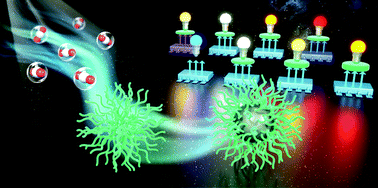Carbon dioxide derived carbonized polymer dots for multicolor light-emitting diodes
Abstract
Carbonized polymer dots (CPDs) have received great interest from researchers in recent years. However, the solid-state photoluminescence quenching of CPDs is a big challenge owing to the resonance energy transfer or π–π* interaction. Herein, we report a new type of carbon dioxide (CO2) derived CPD exhibiting quantum yields of 46.2% in solution and 11.3% as a solid. These CPDs were prepared using ethylenediamine and trimethylolpropane tri(cyclic carbonate)ether synthesized from the reaction of carbon dioxide (CO2) and trimethylolpropane triglycidyl ether as precursors in ethanol. Gel permeation chromatography results revealed that the formation of CPDs involved the polymerization of small molecules and then the transformation of the polymers to CPDs. The solid-state fluorescence is attributed to the self-passivation of poly(hydroxyurethane) chains on the surface of the carbon core. Particularly, the synthesis of CPDs consumed nearly 26.7 wt% CO2, thus providing a new method for fixing CO2 to functional carbon materials. We have also demonstrated the application of CO2-derived CPDs by the fabrication of multicolor light-emitting diodes (LEDs), and a warm white LED is obtained when CPDs are applied as single phosphors by changing the amount of CPDs and the type of chip.

- This article is part of the themed collection: CO2 Utilisation


 Please wait while we load your content...
Please wait while we load your content...